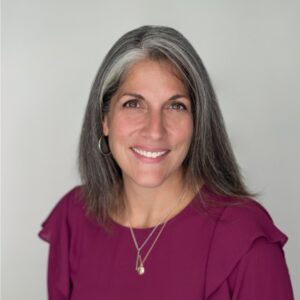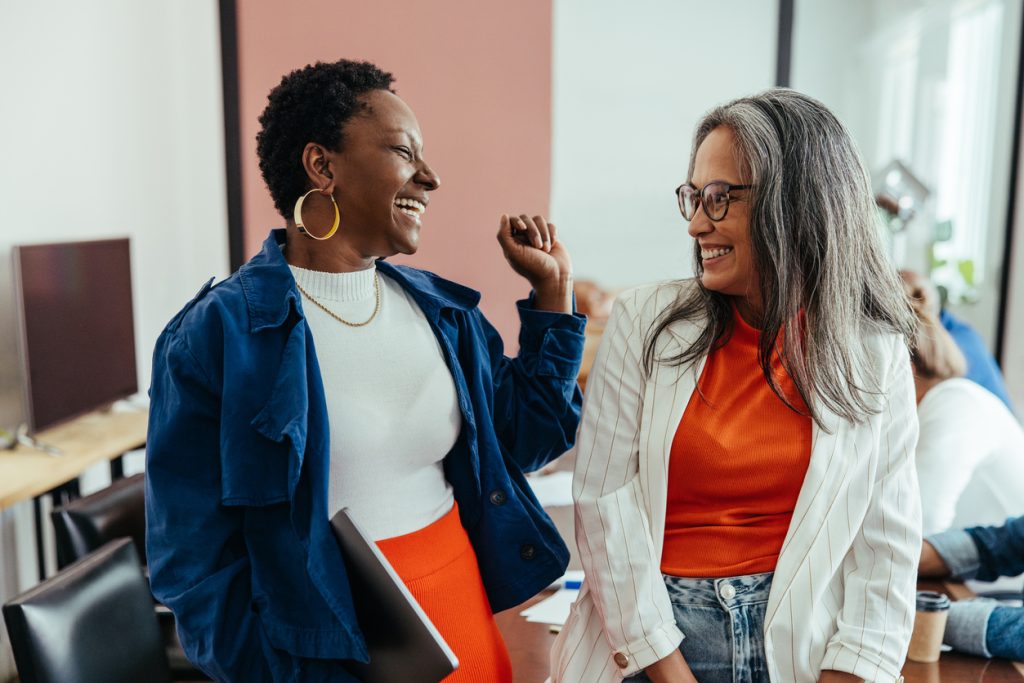Originally published in the Spring 2025 issue of the MASB Leaderboard Magazine.
Introduction
A few years ago, I came across Master of Change by Brad Stulberg, and it couldn’t have landed at a more fitting time. Personally and professionally, I was navigating big transitions—shifts in my role in education, family and health challenges, and the dizzying pace of change unfolding all around us. Change wasn’t just happening to me; it was happening within me. I’m sure you’ve felt this too, the way life’s only constant seems to be change itself.
But what is change, really? And how can we define it in a way that’s meaningful for both our work in education and our own lives?
The truth is, change isn’t just an event. It’s a process, a force, sometimes a companion we didn’t invite but who shows up anyway. We experience it personally, collectively, gradually, and/or all at once.
When change is everywhere and all the time, we need ways to make sense of it. For me, having a skilled coach beside me was a game-changer, but I’ll come back to that shortly. First, let’s zoom out and explore change through different lenses. I believe that when we do this, we’ll see the key isn’t to resist change, but to master it, and the right coaching can help us do exactly that.
Understanding change through allostasis and rugged flexibility
To lead well through change, we first need to understand it more deeply. For decades, we leaned on the concept of homeostasis, the belief that systems work best when they return to a stable balance. I get it, we crave stability in life. But let’s be honest: in today’s complex world, especially in education, “going back to normal” isn’t always possible, or even desirable.
Instead, modern science introduces a more realistic, helpful model: allostasis. Unlike homeostasis, allostasis acknowledges that stability can be maintained by continuous adaptation. It is the science of stability through change, adapting and creating a “new normal” as circumstances shift. That idea really resonates with me, especially as I reflect on the sheer volume of change we all experience. Stulberg (2022) points out that the average person encounters 36 life-disrupting events. Think about that: a big disruption roughly every 18 to 24 months. I know you’re likely already doing that math for your own life, and yes, it adds up quickly.
In education, where change comes from shifting policies, technologies, student needs, and societal pressures, it’s essential that we, as leaders, develop mindsets, skills, and identities that help us not just endure change but use it as a catalyst for growth.
One concept Stulberg offers that’s helped me tremendously is rugged flexibility. It’s about holding firm to essential values, such as equity, student success, and instructional excellence, while remaining open to new methodologies, strategies, and approaches that better serve the changing needs of schools. I’ve found that rugged flexibility doesn’t just help me as a leader, it creates space for innovation and resilience across entire systems. And while it’s powerful on its own, there are additional tools we can use to navigate change with even more clarity and intention.
Mindsets, behaviors, and identities that support change
Change is inevitable, but how we respond to it is where choice comes in. In my own leadership journey, I’ve realized that how we navigate change is shaped by an interplay of mindset, behaviors, and identity.
Mindset: The lens through which we view the world. Certain mindsets have helped me—and many leaders I’ve coached—lean into change with confidence:
- A growth mindset reminds us that intelligence and capacity aren’t fixed; we can grow (Dweck, 2006).
- Embracing the impermanence of life helps us find comfort amid uncertainty or ambiguity (Dalai Lama, Tutu, & Abrams, 2016).
- A curiosity mindset pushes us to ask deeper questions and explore creative connections (MacKenzie & Bathurst-Hunt, 2018; Vance, 2022).
- An innovator’s mindset reframes challenges as opportunities and encourages bold thinking (Couros, 2015).
In my experience, watching leaders live these mindsets and being coached to adopt them myself has shaped how I see and respond to complexity.
Behaviors: Mindset alone isn’t enough. Our actions need to align. One of my favorite reminders comes from Henry Ford: “If you always do what you’ve always done, you’ll always get what you’ve always got.”
Here are three behaviors I encourage all leaders to practice and that I do myself:
- Prioritize regular self-reflection. Create time to ask, what truly matters to me? What am I doing that is helping or hindering my transformation?
- Foster authentic human connections. Have real conversations, not just surface-level exchanges.
- Rely on intentional, defined processes aligned to long-term values for effective decision making, even when short-term pressures push on us all the time.
📋 Take a quick pulse-check:
How often have you lived these behaviors recently? Go to your calendar. Start to examine the frequency and depth at which each behavior—reflection, connection, and processes for choice-making has occurred. How many of these behaviors did you do in the past week? Do you need to go back further than a week? How about the past month? Now look at your calendar going forward, can you block out time to intentionally ensure you are practicing these behaviors? Remember, what you pay attention to gets done.
Identity
Finally, how do you see yourself? Do you view yourself as a change agent, a leader with the power to influence meaningful transformation? Titles might hint at this role, but the deeper driver is your core values. When we internalize identities like “architect of transformation,” we bring energy and courage to the work ahead.
Mindsets fuel behaviors, behaviors reinforce identity, and identity acts as a multiplier in our change journey. Yet, no one leads change alone. Sustainable transformation is also shaped by context, culture, and community—external forces we’ll explore next.
External Factors: The role of context and professional learning
Even the most adaptable leaders can’t create lasting change in isolation. Schools are living ecosystems influenced by politics, funding, and community expectations. That’s why personal adaptability needs to be paired with structural and cultural support.
Cynthia Coburn’s work (2003) reminds us that context matters when scaling or sustaining change. Schools don’t operate in a vacuum, they’re part of interconnected systems. As leaders, we must account for both internal and external influences as we design and evolve change efforts.
But here’s the thing: navigating change in education isn’t just about implementing an initiative; it’s about scaling it in a way that’s both meaningful and sustainable. And that’s where many well-intentioned people and efforts typically fall short.
Scaling change in schools: Depth before breadth
The challenge in education is not just adapting to change but also scaling it effectively. Coburn challenges us to rethink what it means to scale. It’s not just about how fast or far an idea spreads, it’s about how deeply it takes root. Coburn (2023) claims that scalable and sustainable change rests on three key principles:
- Depth: Ensuring that shifts in practice are deeply understood and embedded individually and/or in small groups before expanding them across a larger system.
- Pacing: Recognizing that real transformation takes time. Avoid rushing for quick wins that don’t last. Respect when timing is out of your control, but don’t stop moving either!
- Breadth/cultural integration: True change aligns with the values and behaviors of the entire organization, and is done with people, not to them.
I often hear myths like “If a change didn’t go systemwide, it wasn’t successful” or “If it didn’t happen on schedule, it failed.” But the real impact doesn’t always follow neat timelines or show up in spreadsheets. Sometimes, helping one person, one team, or one school take a transformative step forward is enough to spark a ripple effect. By utilizing a broader definition of scalability, as well as debunking these myths about scalability of change, sustainability, and impact, individuals like school leaders, groups like boards of education, and districts as communities can authentically navigate change together. And this is where coaching becomes invaluable, it creates the space for leaders (with all different titles) to think deeply, plan intentionally, and navigate change in ways that stick.
Professional learning to address change
Navigating change isn’t just an individual challenge, it’s a collective one. That’s why professional learning is so essential. In education, where complexity is the norm, leaders need high-quality learning experiences to strengthen their capacity to lead through uncertainty.
Jay Bennett (2023) spotlighted the Learning Forward Standards for Professional Learning, which emphasize that learning should be ongoing, collaborative, embedded in daily work, and data-informed. These principles don’t just apply to teachers and students; they’re critical for leaders, too.
While workshops, courses, and peer learning communities all play important roles, in my experience, coaching is one of the most powerful forms of professional learning. Coaching provides personalized, ongoing, just-in-time support that helps leaders build resilience, sharpen strategies, and sustain meaningful change.
Coaching for Change: The power of human connection
Coaching has been a game-changer for me, not just professionally, but personally. At its core, coaching is a relationship built on trust, reflection, and intentional dialogue. It’s about helping leaders like you and me surface ideas, challenge assumptions, and strengthen both mindset and action.
I draw from the work of researchers like Costa, Garmston, Knight, Aguilar, and others, but here’s my personal take:
- Coaching is an intentional set of conversations leveraging structured but authentic dialogue, growing an individual’s self-reflection, exploration of ideas, and the development of new perspectives and skills.
- Coaching occurs in a one-on-one environment, establishing a trusting relationship and a safe space to take risks and be honest. It is also customized based on the unique context (district, community, etc.) and needs of the individual.
- Coaching takes time but is most likely to sustain changes in behavior and mindset in a way that exceeds stand-alone professional development or other forms of learning.
From my own lived experience and research, I’ve seen four clear benefits that coaching brings to the change process:
- By talking with another person, thinking is made visible, more real, and more actionable.
- Repeated talking with a trusted person over time increases a person’s internal accountability and external sustainability of a transformation at multiple levels.
- By engaging with others of various viewpoints and perspectives, new ideas are more likely to be generated. Exposure to different viewpoints challenges assumptions and encourages creative solutions.
- By spending time in reflection with others, learning deepens, beliefs and mindsets solidify into behaviors, and effective decision-making processes increase.
Also, good coaching is customized to your unique role, your district, and your community. And while it takes time, it creates lasting shifts, far beyond what stand-alone professional development can do.
I know, I’ve lived it. I’ve been coached and have coached others for years. During my time as the Director of Learning Services and Instruction at the Jackson County Intermediate School District, with goals as a leader and a strategic vision for innovation, I found I wanted and needed a trusted person to push my mindset, co-build action and accountability for small steps of change, and much more. So, I invested in an external coach for myself as well as coaching for some leaders on my team. The results? Tangible, meaningful transformation—not just in me, but across the entire organization.
Today, I’m a champion of Leadership Coaching for Innovation, a model designed specifically for education leaders managing complex change and striving for innovation that will make a difference in our schools. Grounded in research and tailored to each leader’s unique context, this coaching approach has helped me and many others harness change as a lever for positive impact.
Conclusion
Change in education isn’t just inevitable—it’s essential. But it doesn’t have to feel overwhelming. When we understand models like allostasis, adopt the right mindsets, and engage in intentional behaviors, we start turning disruption into progress.
And when we add coaching to the equation? That’s when things really shift. Coaching provides the reflection, structure, and human connection that helps leaders like us move from reacting to change to mastering it.
I’ve lived this journey. I’ve seen how coaching has helped me, and countless others, build resilience, deepen purpose, and lead with clarity, even in uncertain times.
So, here’s my invitation to you: Don’t just navigate change. Learn to master it—with support, with intention, and with a coach by your side. Because when you do, change becomes more than something to survive. It becomes your greatest opportunity to lead, grow, and transform your community.
References
Bstan-ʼdzin-rgya-mtsho., Tutu, D., & Abrams, D. C. (2016). The book of joy: Lasting happiness in a changing world. Avery, an imprint of Penguin Random House.
Coburn, C. E. (2003). Rethinking scale: Moving beyond the numbers. Educational Researcher, 32(6), 3-12.
Couros, G. (2015). The innovator’s mindset: Empower learning, unleash talent, and lead a culture of creativity. Dave Burgess Consulting.
Dweck, C. S. (2006). Mindset: The new psychology of success. Random House.
Learning Forward. (2023). Standards for professional learning. Retrieved from https://learningforward.org/standards-for-professional-learning/
MacKenzie, T., & Bathurst-Hunt, R. (2018). Inquiry mindset: nurturing the dreams, wonders, & curiosities of our youngest learners. EdTechTeam Press.
Michigan Virtual. (n.d.). Leadership coaching for innovation. Retrieved from https://michiganvirtual.org/consulting/leadership-coaching-innovation
Spivey, M. & Shulberg, B. (2024, Jan. 2). Podcast: How to make your resolution stick, with ‘Master of Change’ author Brad Stulberg. Retrieved from https://www.spiveyconsulting.com/blog-post/brad-stulberg-podcast
Stulberg, B. (2022). Master of change: How to excel when everything is changing – Including you. HarperOne.
Vance. J. (2022). Leading with a lens of inquiry: Cultivating conditions for curiosity and empowering agency. Elevate Books Edu.







